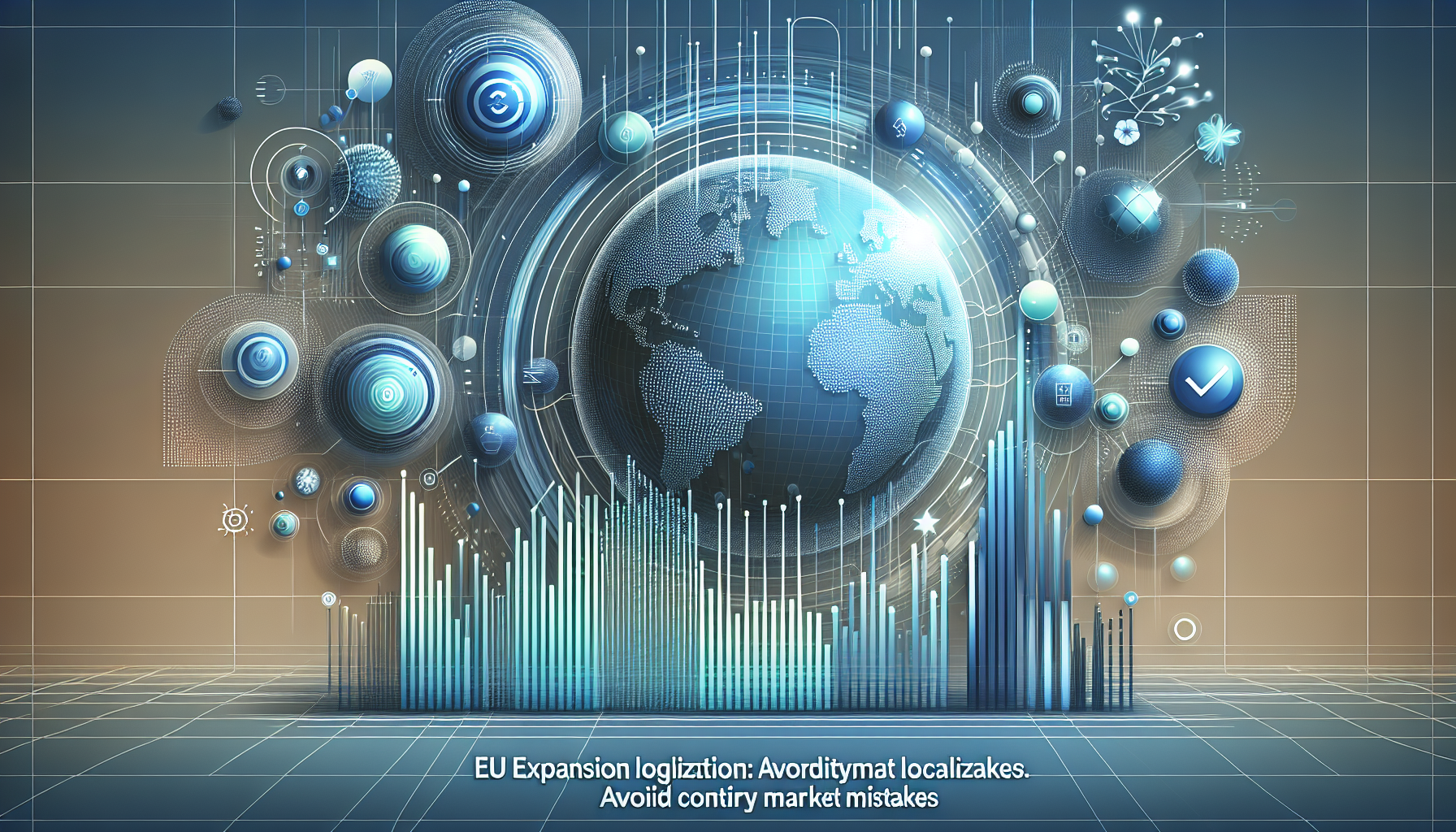About eldris
Clone.Eldris.ai empowers brands to instantly replicate and translate their websites for seamless global expansion. Our automated system delivers SEO-friendly, multilingual clones that launch in days, not months.
In This Article
- EU Expansion requires cultural and linguistic localisation to avoid costly missteps
- Translation alone is insufficient; full localisation covers legal, UX, and emotional touchpoints
- Real-world brand failures underscore the importance of getting localisation right
- Tools and native consultancy reduce risk and enhance accuracy
- Localising product pages affects SEO, conversions, and trust
- Testing and analytics should guide regional strategy refinements
- Investing in localisation accelerates market penetration and long-term loyalty
- A tailored approach to each EU country yields compounded ROI over time
Why EU Expansion Requires More Than Translation
The Risk of Overlooking Culture
EU Expansion Localization is not simply about converting words. It demands a strategic transformation that embraces the cultural, linguistic, legal, and behavioural nuances of each country. While translation deals solely with language, localisation dives deeper—it reflects the way people live, shop, and think across the EU. Local preferences vary greatly between Germany, Italy, and Sweden, for example. Colours, metaphors, and humour that work in Spain may be completely misunderstood in Finland.
Overlooking cultural sensitivities can irreparably damage brand identity. Western companies that roll out centralised marketing strategies often fail to connect with customers who seek personalisation. Even payment methods, regulatory specifics, and measurement systems vary. EU Expansion Localization ensures that every text, visual, and interactive element resonates with the specific audience of that country—not just in language but in meaning.

Common Mistranslations That Have Cost Businesses
Real-World Brand Fails in the EU
Numerous global brands have learned the hard way that poor localised content destroys trust instantly. One well-known example is American Motors’ launch of the Matador in Spain. While the name invoked strength in the U.S., in Spanish it unfortunately translates to “killer”—clearly not the image they were aiming for. The car flopped spectacularly. Another notable failure occurred when a global fast-food chain tried entering the French market with direct translations of its American slogans. Due to literal translation, the slogan came off as aggressive, offending potential customers.
Even tech companies haven’t been immune. A software firm’s careless localisation efforts led to Polish users receiving a message that loosely translated to “You are not allowed here.” The fallout hit millions in lost revenue and credibility. EU Expansion Localization, when correctly implemented, helps prevent these blunders by considering language structure, idioms, and sensitivities. Instead of direct translations, it delivers content that speaks genuinely and respectfully to local audiences.
“Localisation is about emotion, not just information. Speak to the heart of your customers – not just their dictionaries.”
Understanding Cultural Norms Within EU Nations
Cultural awareness lies at the core of EU Expansion Localization. Every EU nation operates with its distinct customs, values, and etiquette. For instance, Scandinavian consumers prize simplicity and ecological sustainability, whereas Italians often prefer emotionally charged, visually rich experiences. Germans respond well to logical structure and formal tones, while British consumers favour subtleties and humour.
Even visual layouts need to adapt. French customers expect elegant design with emphasis on sophisticated fonts, while Dutch audiences lean towards practical designs with minimal clutter. Using the same UX design across multiple markets rarely yields optimum results. Retailers who tailor CTA (call-to-action) phrasing, imagery, and even form field structures for each culture see notably higher conversion rates.
Localization vs. Translation: What’s the Difference?
Understanding the distinction between translation and localisation is critical for business success across Europe. Translation changes words from one language to another. However, localisation transforms the entire message—including design, imagery, legal elements, currency, and date formats—to suit local climates.
For example, a well-localised website in Ireland will use British English spellings, local idioms, and payment processors like Revolut or PayPal. It will also display pricing in euros and date formats such as “31 December 2024.” Designs are adjusted for reading habits, which may differ dramatically across cultures. Localisation incorporates everything from tone of voice to customer service hours, ensuring a seamless consumer journey. EU Expansion Localization bridges this gap, crafting a locally-fluent user experience—not merely decipherable, but delightfully familiar.
Tools and Services That Prevent Expensive Errors
To execute EU Expansion Localization accurately, businesses must employ robust localisation tools and services. Translation Management Systems (TMS) like Smartling, Lokalise, and Phrase enable teams to manage multilingual content efficiently. These platforms offer terminological consistency, revision workflows, and integration into CMSs.
Additionally, using AI-enabled Quality Assurance tools can detect linguistic inconsistencies, mistranslations, and regional errors before content goes live. Partnering with local agencies or localisation consultants ensures culturally nuanced messages. Platforms like TransPerfect or Lionbridge combine technology with native-level linguistic expertise. Don’t overlook analytics tools like Hotjar or Google Analytics that provide conversion and behaviour insights across different locales. Applying findings from these platforms allows refinement of localised strategies iteratively.
How To Localize Your Product Pages for EU Customers
EU Expansion Localization for product pages demands granular attention. Start by translating product titles, specifications, and descriptions. However, don’t stop there. Localise measurement units (e.g., inches to centimetres), taxes (such as VAT differences), and currency (e.g., Euro, Krona, Zloty). Furthermore, adapt product imagery that speaks to the culture, gender roles, and seasonal preferences of each region.
Include local customer reviews and testimonials that reflect regional authenticity. Optimise SEO metadata—including title tags, alt text, and descriptions—with region-specific keywords. This dramatically improves local search visibility. Users are more likely to engage and purchase if content reflects their reality. Moreover, adjust shipping options, pricing terms, and returns policies for local expectations. Failure to do so can lead to cart abandonment and bad reviews.
Strategies to Maximize Revenue from Localization
Done strategically, EU Expansion Localization becomes a powerful revenue booster. Begin by localising high-impact pages first—landing pages, checkout flows, and customer support content. Use A/B testing to evaluate the impact of translated versions versus localised versions. Businesses often note uplift in engagement ranging from 15% to 40% with fully localised campaigns.
Retargeting strategies should reflect local timelines and holidays. For instance, leveraging Germany’s “Tag der Deutschen Einheit” or France’s “Bastille Day” with local offers creates emotional connection and urgency. Leverage social proof in local languages—awards, influencers, and endorsements. Also, personalise email marketing campaigns using local phrases and cultural references. Iterate constantly with performance metrics from each national site, identifying high-performing elements per region. This data-first localisation methodology uncovers hidden profits and builds long-term customer loyalty.
Case Study: A Successful Localization Rollout in Germany & France
A prominent UK-based fashion eCommerce brand, initially struggled to penetrate the German and French markets. Despite offering shipping across Europe, significant bounce rates and low conversion figures plagued their German and French domains. Realising the need for comprehensive EU Expansion Localization, they embarked on a market-by-market overhaul. In Germany, they localised navigation labels, colour palettes, sizing charts, and payment options (like Sofort and SEPA). Their customer support team also expanded to include native German agents.
In France, they created locally shot photography featuring diverse French models wearing outfits suited to seasonal climates. Moreover, shipping policy was revised to meet French consumer protection laws. SEO audits tailored Google-friendly French keywords, leading to a 33% rise in organic traffic. In just nine months, return customer rates shot up by 28% in France and 41% in Germany. The lesson? Treating each market with bespoke strategies, underpinned by precise localisation, transforms growth potential across the EU.
Checklist: Avoiding Costly Localization Mistakes
- ✔ Research cultural context before translation begins
- ✔ Localise—not just translate—product descriptions, metadata, and visual media
- ✔ Partner with native-language specialists for each target region
- ✔ Adapt checkout processes to abide by local laws and consumer behaviour
- ✔ Optimise customer service support in native languages
- ✔ Regularly QA translated content using TMS and AI proofreading tools
- ✔ Use geo-specific SEO strategies for each local domain
- ✔ Include local payment and delivery methods
- ✔ Refine UI/UX to reflect regional design expectations
- ✔ Continuously analyse regional analytics for iterative improvements
Conclusion: Turning Localization Into Competitive Advantage
Adopting an EU Expansion Localization strategy turns regional diversity from a challenge into a competitive edge. Instead of a one-size-fits-all solution, localisation respects what makes each EU market unique. It delights your prospects, satisfies legal requirements, and boosts your revenue. By integrating local languages, norms, visuals, and buying habits into your business strategy, you convey commitment—not just availability. Ultimately, businesses that prioritise localisation cultivate trust and foster long-term customer relationships across borders.
Great guide on avoid-costly-errors-in-eu-expansion-with-localization – Community Feedback
What are three drawbacks of being involved in the EU?
Three common drawbacks of EU membership include loss of national sovereignty, increased bureaucracy, and potential economic disadvantages in contributing to the EU budget.
How does the EU affect globalization?
The EU plays a major role in globalization through unified competition policy, collective trade negotiations, and internal market regulations that facilitate free movement of goods and services.
What is the purpose of the European Union and what are some of its challenges?
The EU’s purpose is to enable free movement of people, goods, services, and capital, and to create unified policies on trade and development. Challenges include maintaining cohesion, navigating policy differences, and upholding regional stability.
What is a common criticism of being a member country of the EU?
A major criticism is that integration can undermine national sovereignty, result in bureaucracy, and raise concerns regarding transparency, democratic legitimacy, and control over immigration.










